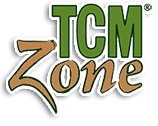Healing Endometriosis with Traditional Chinese Medicine: Herbal Formulas and Acupuncture Points

By Xiyuan “Alex” Qiu, L.Ac.
Endometriosis is a complex and often painful condition that can be challenging to manage. Over 5 million women suffer with this condition. Many women, having found limited relief from conventional Western medicine, seek alternative options. Acupuncturists and herbalists, with their holistic approach to healthcare, can offer valuable support and relief for women coping with endometriosis. In this blog, we’ll delve into how Traditional Chinese Medicine (TCM) can be a powerful tool in managing endometriosis, focusing on herbal formulas and acupuncture points that can make a significant difference.
Understanding Endometriosis
Endometriosis is a condition characterized by the growth of tissue similar to the uterine lining (endometrium) outside the uterus. These lesions can lead to severe pain, inflammation, and complications, including infertility. Conventional Western treatments often involve surgery and hormonal therapies, but these may not provide complete relief for all patients.
Traditional Chinese Medicine Approach
In TCM, Endometriosis is frequently associated with Blood stasis and Qi (energy) stagnation. TCM treatments aim to promote the free flow of Qi and Blood, alleviate pain, and address the underlying imbalances. Acupuncturists and herbalists can personalize their treatments based on the patient’s specific TCM pattern diagnosis. Here are some herbal formulas and acupuncture points to consider:
Herbal Formulas for Endometriosis
- Gui Zhi Fu Ling Wan: This classic formula combines Gui Zhi (Cinnamon Twig) and Fu Ling (Poria) to promote Blood circulation and resolve Blood stasis. It is often used to reduce pain and regulate menstruation.
- Wen Jing Tang: This commonly used formula is beneficial for warming the menses, regulating menstruation, dispelling cold, warming the channels, nourishing the Blood and dispelling blood stasis.
- Shao Fu Zhu Yu Tang: Shao Fu Zhu Yu Tang is a more advanced formula, containing several potent herbs like San Leng (Sparganium) and E Zhu (Zedoary Rhizome). It is particularly effective for alleviating pain and resolving stagnation in the lower abdomen.
- Xiao Yao San (Free and Easy Wanderer Powder): This formula, containing herbs like Bai Shao (White Peony Root) and Dang Gui (Chinese Angelica Root), helps to soothe Liver Qi stagnation especially in the Luteal phase, which often contributes to endometriosis-related discomfort.
Acupuncture Points for Endometriosis
- Spleen 6 (SP6) Yin Lin Quan: Known as the “Three Yin Intersection,” SP6 is vital for harmonizing the Spleen, Liver, and Kidney energies, reducing pain and discomfort in the lower abdomen.
- Liver 3 (LV3) Tai Chong & Liver 3 (LI4) He Gu: For assistance witho dysmenorrhea, these two sets of acupoints are often used together, known as the “4 Gates,” with the main function of promoting qi circulation, relieving stagnation, and alleviating discomfort.
- Ren 4 (CV4) Guan Yuan: Located on the Conception Vessel, Ren 4 has a tonifying effect on the lower abdomen, improving Blood circulation in the pelvic area.
- Stomach 25 (ST25) Tian Shu: Often used to help with irregular menstruation and associated discomfort.
- Spleen 8 (SP8) Di Ji, Xi: This is the cleft point of the Spleen channel of the Foot Tai Yin. It is a very effective, and commonly used, acupoint in the assistance of gynecological disorders.
Personalized Treatment
It is crucial to tailor treatment to each patient based on their TCM pattern and specific symptoms. This may involve a combination of acupuncture and herbal remedies, adjusted as their condition evolves or adjusted for specific phases of the menstrual cycle
Lifestyle Recommendations
In addition to TCM treatments, encourage your patients to consider lifestyle changes that can support their healing journey. These may include dietary modifications, stress reduction techniques, and exercise to enhance overall well-being. Abdominal massage and moxa are other wonderful additions to overall care.
Endometriosis is a challenging condition to manage, but as acupuncturists and herbalists, you have the potential to provide significant relief to patients who may have exhausted other options. By understanding TCM principles and applying herbal formulas and acupuncture points tailored to the individual, you can help women regain control over their lives and experience reduced pain and discomfort. Remember that a holistic approach, combining TCM with lifestyle adjustments, can lead to more effective results and improved quality of life for your patients dealing with endometriosis. Your expertise in TCM offers hope and healing to those in need.


